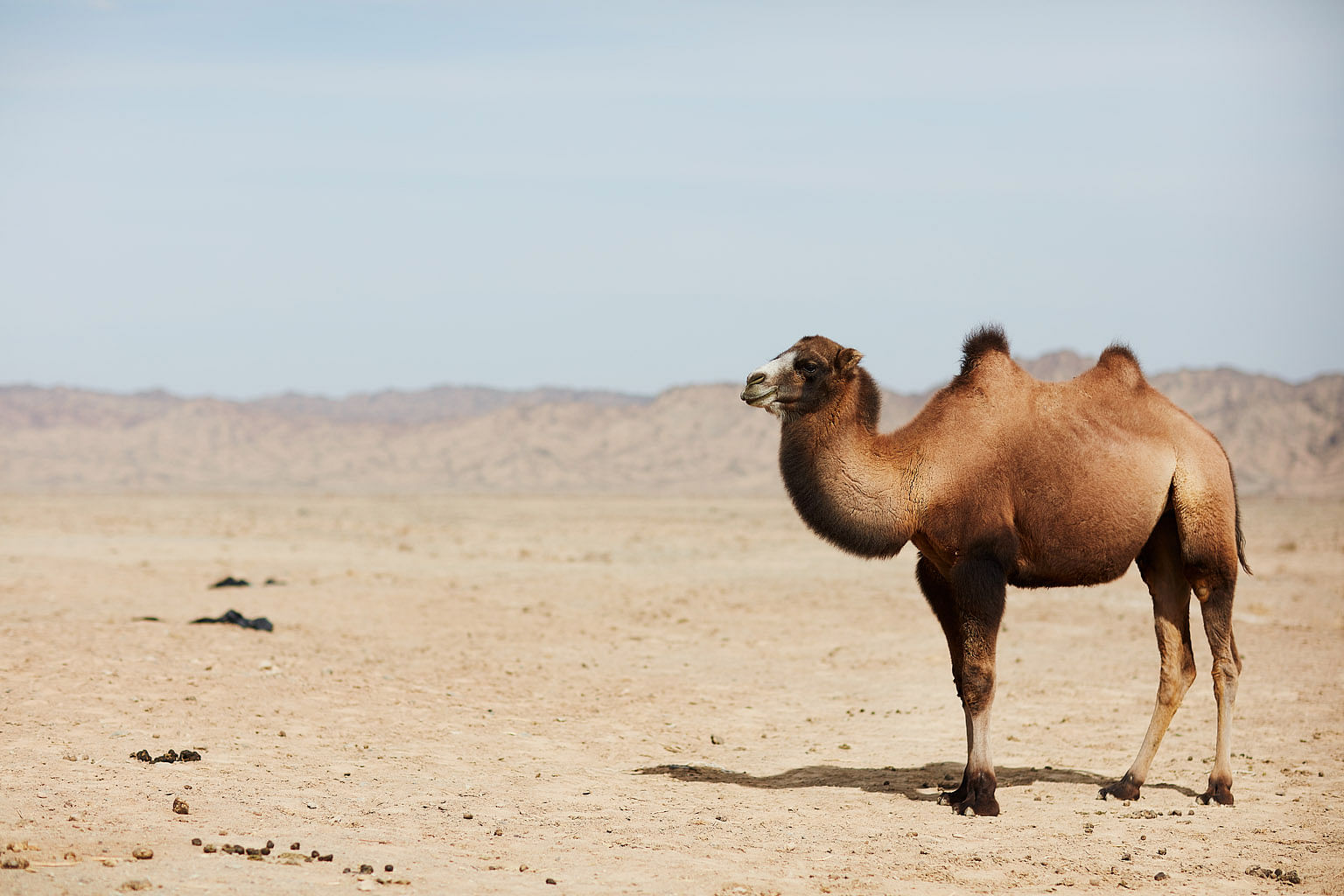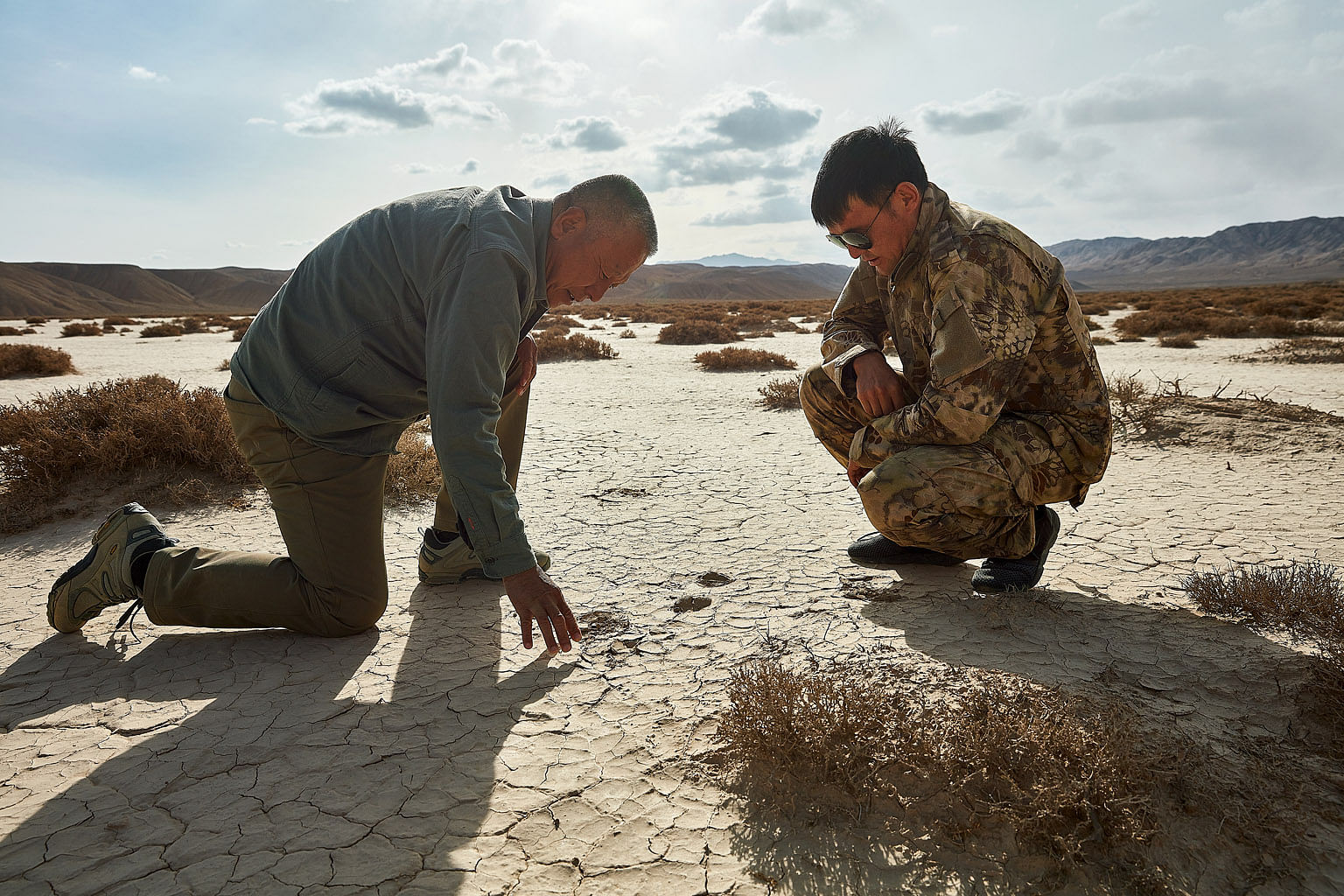IN PARTNERSHIP WITH ROLEX
Using space tech to protect camels: How aerospace pioneer is saving wild herds from extinction
By fitting satellite trackers on the animals, Chinese remote sensing specialist and 2023 Rolex Awards for Enterprise Laureate Liu Shaochuang hopes to study their lives and set up two conservation zones

With less than 1,000 wild camels in the world, Chinese aerospace pioneer and 2023 Rolex Awards for Enterprise Laureate Liu Shaochuang is employing remote sensing, a satellite technology used to observe Earth’s surface, to save them. PHOTO: ROLEX/LIU XIAOXUE
Follow topic:
Even in a small and developed city-state such as Singapore, some rare plants and animals that were unknown or thought to be extinct continue to survive under our noses, with researchers uncovering and then working hard to protect them. In recent years, the discoveries here have included a fish recorded over 160 years ago and a plant last seen in the 19th century.
The hope of keeping nature’s diverse creations alive and thriving is the fire that drives many scientists around the world, including Chinese aerospace pioneer Liu Shaochuang, who has turned his expertise in remote sensing – the use of satellites to observe Earth’s surface – into a way to help the critically endangered wild camel.
With its thick shaggy coat and two humps, these biologically unique camels have roamed the plains of the Gobi desert in Mongolia and China for thousands of years, but are dwindling due to climate change, habitat loss, predation, hunting, disease, domestication and other reasons. Estimates suggest that there are fewer than 1,000 of them left today.
Mr Liu, an adventurer who has mapped the globe’s great rivers, became the first person from China to reach the North Pole on foot alone in 2002. Having played a key role in developing the navigation systems for China’s lunar and Mars rovers, the 60-year-old first encountered the camel in 2011 while testing a prototype of the lunar rover Yutu-3 in the Gobi Desert.
At the time, with the camels’ thin and already-shrinking population spread across a 200,000 sq km expanse in the desert, tracking them seemed virtually impossible, so researchers relied on analysing their hoof prints and droppings instead. Mr Liu, fascinated by the animal, thought that space technology could be a way to monitor the scattered herds.
By placing tracking collars that link to satellites on the camels, he has studied them since 2012 with the goal of increasing their numbers and preventing their extinction. His trailblazing approach has produced startling findings about them, such as changes in their habitat range, and captured the attention of many, including Swiss watchmaker Rolex.

In February, Rolex named him as one of its five 2023 Rolex Awards for Enterprise Laureates. The award will support his fieldwork, including fitting more of the collars on camels, collecting biological samples and developing or purchasing equipment for disease monitoring, all with the larger goal of creating two new conservation zones for the camels.
Mr Liu highlights: “The Rolex Award is a very important international award, so winning it has attracted more attention to our project, including from different sectors. It feels incredibly encouraging, and it is possible that the government, among others, will invest more resources in wild camel conservation and research as a result.”
Learning more about wild camels’ lives
While the insight of using space technology has paid off, the endeavour was difficult at first. Mr Liu had to learn zoology – how to study animals scientifically – from scratch, and he and his team endured dust- and sand-storms in the desert to locate the camels. He still has a scar on his right eyebrow from a vehicle accident during one of the trips.
There are now seven wild camels fitted with the tracking collars, which transmit their location every day. These collars, which have special receivers, weigh just a few hundred grams and do not have a negative impact on the animals’ daily lives. They can also be programmed to open and drop off automatically.
With the ability to follow the camels as they travel across the vast desert, Mr Liu and his team aim to understand what needs to be done to safeguard their future.
“Finding out where they go, where they drink and what kind of threats they face will help us to draw up plans to better protect their water sources and define their protection zone,” he explains.
With satellites able to reveal information about the environments where they roam, he is also concentrating on the wide array of threats to them, including climate change, disease, grazing competitors and predatory attacks. Additional detailed data on these threats will facilitate more well-informed and useful countermeasures.
For example, by using computers to model a variety of climate scenarios, as well as potential interactions between the camels and humans or other grazing animals, wildlife managers can design refuges for the animals in different areas in the desert that are best suited to their long-term survival.
Such conservation initiatives are especially urgent as Mr Liu’s research has led to a dismaying revelation. Climate change has greatly reduced the camels’ suitable habitat range, and they have moved to China’s colder Altun mountain range and Mongolia’s higher-altitude regions. This could mean a higher chance of wolf attacks and fewer drinking water sources for them.
A dream of two conservation zones
Ultimately, Mr Liu wants to harness the newfound knowledge from his work to help establish two large conservation zones – a China Wild Camel National Park and a China-Mongolia Cross-Border Wild Camel Nature Reserve – in partnership with conservation organisations. For him, protecting these animals is good not just for biodiversity but for people too.

The wild camels are resilient in harsh environments, and some researchers believe their genes may contain breakthroughs in understanding human diseases. In a scientific paper published in 2021, scientists found that the animals can change their insulin resistance – a key factor in diabetes – to help them survive long periods of fasting.
In the meantime, Mr Liu has plenty of other ideas, including an integrated space-air-ground monitoring system that spans the use of remote sensing satellites in space, aircraft in the sky and wireless smart sensors on the ground to further boost his team’s and other researchers’ capabilities in observing the wild camels.
He adds that he may apply his tracking techniques to studying other species. “I like to explore the unknown,” he says. “I also hope that by becoming a Rolex Awards Laureate, my work can motivate others, including the people around me, to work hard and use the opportunity to expand our technical knowledge to other fields, such as conservation.”
The Rolex Awards are also part of the wider Rolex Perpetual Planet Initiative launched in 2019. This assists people and organisations that harness science and technology to understand the world’s environmental challenges, and to develop groundbreaking solutions that help address them and restore balance to fragile natural ecosystems.
The Initiative has a varied and growing portfolio of over 20 partnerships, with organisations ranging from Rewilding Argentina and Rewilding Chile, which protect landscapes in South Africa, to Coral Gardeners, which transplants resilient corals to reefs, and Great Spine of Africa expeditions that explore the continent’s major river basins.
Rolex also supports organisations and initiatives that foster the next generations of explorers, scientists and conservationists through scholarships and grants, such as the Our World-Underwater Scholarship Society and The Rolex Explorers Club Grants, and the Explorers Club’s Global Exploration Summit, which gathers world-leading explorers annually.
The Rolex Awards’ 160 Laureates to date include French bioacoustics scientist Michel André, whose network of listening devices in oceans tracks noise pollution that threaten marine life, among other work, and Brazilian scientist Luiz Rocha, who is surveying coral reefs deep under the Indian Ocean’s surface, to discover species and make the case for the reefs’ protection.
With his Rolex Award, and by becoming part of the extended Rolex Perpetual Planet Initiative, Mr Liu is excited to contribute to the global network of Laureates and partner organisations striving to do their part for the environment and humanity: “Through this Rolex Award, I can spread my project’s strengths and technologies to others. That is a dream of mine too.”
We The Earth is a partnership between The Straits Times and Rolex and its Perpetual Planet Initiative. Mr Liu Shaochuang, a 2023 Rolex Awards for Enterprise Laureate, is a stellar example of the many individuals who are doing their part to solve the issues Earth faces.

